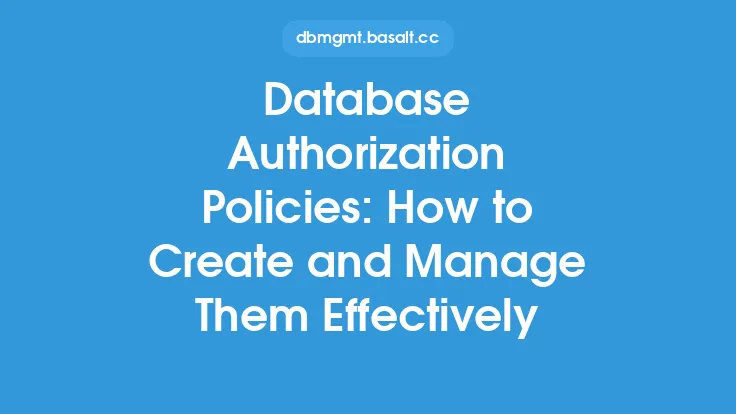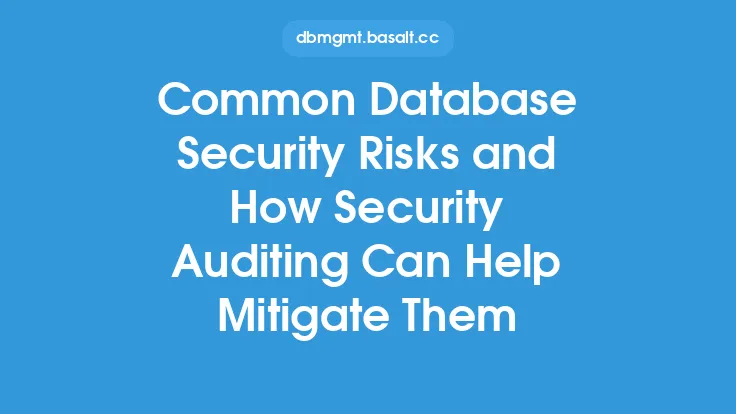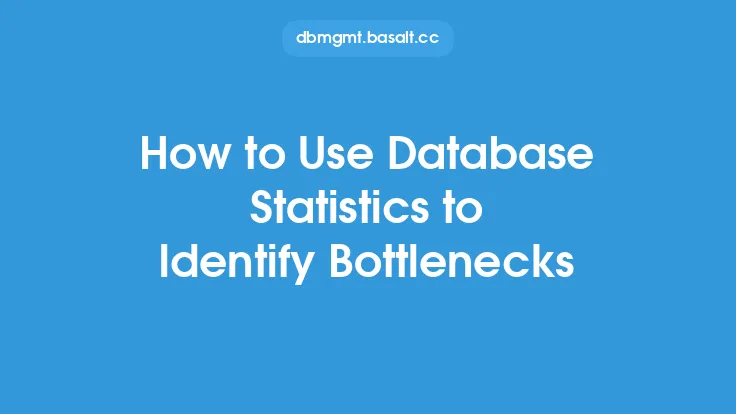Database security is a critical aspect of protecting sensitive data, and vulnerability assessment is a key component of this process. A database vulnerability is a weakness or flaw in the database management system, its configuration, or the underlying operating system that can be exploited by attackers to gain unauthorized access, steal data, or disrupt service. In this article, we will discuss the top 5 database vulnerabilities and how to identify them.
Introduction to Database Vulnerabilities
Database vulnerabilities can be classified into several categories, including configuration vulnerabilities, design vulnerabilities, and implementation vulnerabilities. Configuration vulnerabilities occur when the database management system is not properly configured, leaving it open to attack. Design vulnerabilities occur when the database design is flawed, making it vulnerable to attack. Implementation vulnerabilities occur when the database is not properly implemented, leaving it open to attack. Some common types of database vulnerabilities include SQL injection, cross-site scripting, buffer overflows, and privilege escalation.
Top 5 Database Vulnerabilities
The top 5 database vulnerabilities are:
- SQL Injection: SQL injection occurs when an attacker is able to inject malicious SQL code into a database in order to extract or modify sensitive data. This can happen when user input is not properly validated or sanitized.
- Weak Passwords: Weak passwords are a common vulnerability in databases. If passwords are not complex or are easily guessable, an attacker can gain unauthorized access to the database.
- Unpatched Vulnerabilities: Unpatched vulnerabilities occur when the database management system or underlying operating system is not properly patched, leaving it open to attack.
- Misconfigured Access Control: Misconfigured access control occurs when the database access control is not properly configured, allowing unauthorized users to access sensitive data.
- Outdated Software: Outdated software is a common vulnerability in databases. If the database management system or underlying operating system is not up-to-date, it can leave the database open to attack.
Identifying Database Vulnerabilities
Identifying database vulnerabilities requires a combination of manual and automated techniques. Some common methods for identifying database vulnerabilities include:
- Vulnerability Scanning: Vulnerability scanning involves using automated tools to scan the database for known vulnerabilities.
- Penetration Testing: Penetration testing involves simulating an attack on the database to identify vulnerabilities.
- Configuration Review: Configuration review involves manually reviewing the database configuration to identify vulnerabilities.
- Log Analysis: Log analysis involves analyzing database logs to identify potential security incidents.
Tools for Identifying Database Vulnerabilities
There are several tools available for identifying database vulnerabilities, including:
- Nessus: Nessus is a vulnerability scanner that can be used to identify known vulnerabilities in the database.
- OpenVAS: OpenVAS is a vulnerability scanner that can be used to identify known vulnerabilities in the database.
- Burp Suite: Burp Suite is a penetration testing tool that can be used to simulate an attack on the database.
- SQLMap: SQLMap is a penetration testing tool that can be used to identify SQL injection vulnerabilities.
Best Practices for Preventing Database Vulnerabilities
Preventing database vulnerabilities requires a combination of best practices, including:
- Regular Patching: Regular patching involves keeping the database management system and underlying operating system up-to-date with the latest security patches.
- Strong Passwords: Strong passwords involve using complex and unique passwords for all database accounts.
- Proper Configuration: Proper configuration involves configuring the database access control and other settings to prevent unauthorized access.
- Regular Auditing: Regular auditing involves regularly reviewing the database configuration and logs to identify potential security incidents.
Conclusion
Database vulnerabilities are a serious threat to the security of sensitive data. By understanding the top 5 database vulnerabilities and how to identify them, organizations can take steps to prevent and remediate these vulnerabilities. Regular vulnerability scanning, penetration testing, and configuration review can help identify potential vulnerabilities, while best practices such as regular patching, strong passwords, and proper configuration can help prevent vulnerabilities from occurring in the first place. By prioritizing database security and taking a proactive approach to vulnerability management, organizations can help protect their sensitive data from unauthorized access and other security threats.





